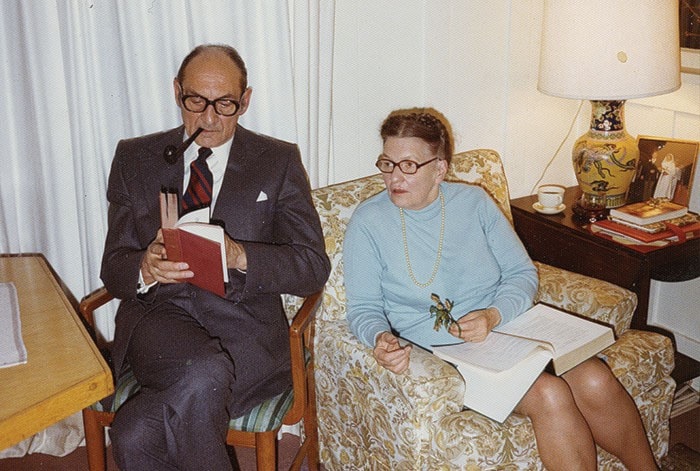Catherine Gilbert
Special to the Mirror
The name Haig-Brown most often conjures up images of fly fishing and the Campbell River, topics that eminent author Roderick Haig-Brown wrote about and became internationally famous for.
But his books might never have made it to the publisher without help from his wife, Ann (née Elmore) who typed the manuscripts that Roderick had written out in long hand. She also shared her husband’s commitment to and sense of community, and was eventually recognized for her own contributions to her local society.
Roderick and Ann met in Seattle, Wa. when he was working in logging. Ann was a well-educated young lady who had obtained a bachelor of arts degree from Berkeley University in California. Although she was accustomed to city life, she followed her husband to the fledgling village of Campbell River in the 1930s and they settled into a rural existence on the riverside property where their home, the Haig-Brown Heritage House, sits today.
Roderick wrote in 1949 in Measure of the Year how he admired his wife’s ability to adapt to country life.
“Fifteen years ago Ann was a city girl, only a little while out of university… I had in my own mind a feeling that although we were starting out to live in the country, it would be only a matter of time before we turned to a city. But I have never once heard Ann regret the city or suggest going back to it for anything longer than a quick visit.”
Although it was Roderick who instigated creating a large vegetable garden, Ann took over the role of gardener, which Roderick thought sensible since his wife was also the chief cook. Her interest in gardening grew to include the landscaping of their 20-acre property, in a style that was strongly influenced by a trip to Italy. Daughter Valerie wrote in Deep Currents that her mother was an admirer of Renaissance art and architecture, and that later in life, she became fluent in Italian.
Those who knew Ann remember her love of books, and the library of the Haig-Brown House, which she filled with more than 3,000 volumes, attests to this passion. Appropriately, Ann worked as a school librarian, first at the elementary school then at the high school, Carihi, and for a period taught social studies. Family friend Diana Kretz, in remembering Ann, said that “the family had many books and magazines of educational value that were read and then shared with other families. Her kitchen was a place of learning and I remember having grammar lessons from her.”
Ann also voluntarily created the library at the Ann Elmore Transition House, named after her as a tribute to her work with troubled women and children who needed shelter. As Roderick was to write in a letter reproduced in Deep Currents: “Mother is doing her 10 a.m. to 6 p.m. stuff in the [school] library and liking it rather well. She also has the place filled with waifs and strays – one in the house and three in the cottage. The rumour around town is that the place is a front for drugs.”
Ann’s life was one of continual busy-ness, even long after her four children had grown and left home. In an excerpt from a letter Ann wrote to daughter Valerie, her mother tells her that the University Women’s Club was meeting at the house, and that a few days later Ann was, “taking the Catholic Women’s League and the Women’s Centre Secretary to lunch so that they can amalgamate their work for a Transition House (without me).” Fellow Catholic Church member Mary Roberts, in remembering her long friendship with Ann, said, “We criticized the various governments, the Church, the social systems, deplored the women’s situations, worried about teenagers, exchanged recipes, reviewed books, quoted our favourite poems and so on. She was a ‘doer’, as we know, and when she saw a lack she filled it.”
Ann also served on the Board of the John Howard Society (JHSNI) for many years. Paul Barnett, a former JHSNI director wrote that, “when it came to social justice issues, Ann had a very pragmatic approach to how society should deal with both victims and offenders. She believed in focusing on compassion and healing. She had a natural understanding of justice and was ahead of her time in recognizing best practices.”
Perhaps Ann’s actions and life are best summed up in words written by Terry Moist, who served on the JHSNI board with her.
“Ann was very self-effacing. She would never give herself credit for anything, but she did so many good things.”
Roderick passed away in 1976 and Ann in 1990. Their four children, Valerie, Mary, Alan and Celia all went on to careers in education and literature. Today, the Museum at Campbell River honours the influence of the Haig-Brown family through the annual Haig-Brown Lecture. This year’s speaker will be noted Canadian author Bev Sellars, whose lecture is entitled Aboriginals, Conservation, Fish and our Common Survival. The lecture will address issues of the Residential School system, environmental stewardship and cultural perspectives on economy.
